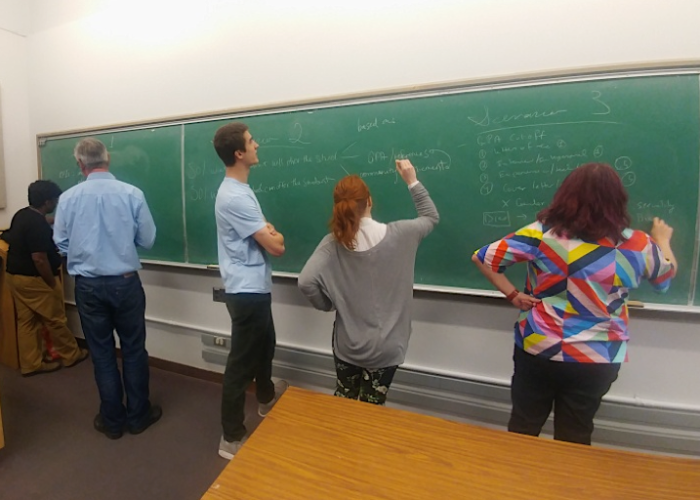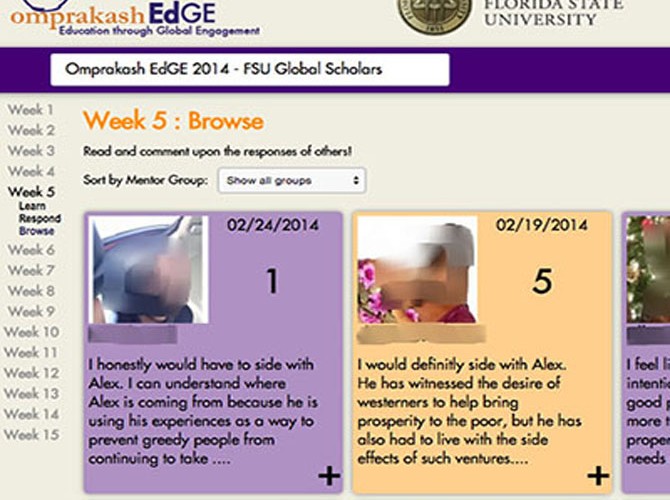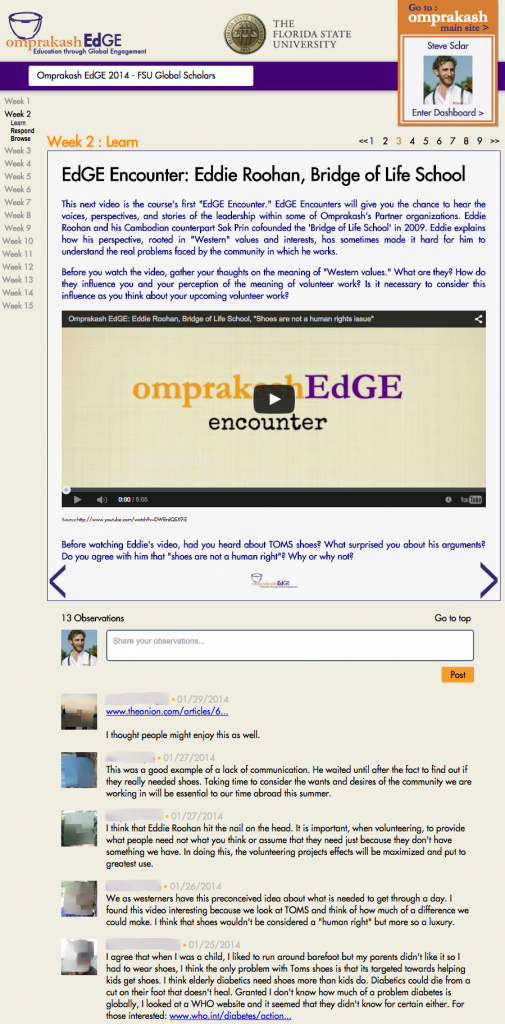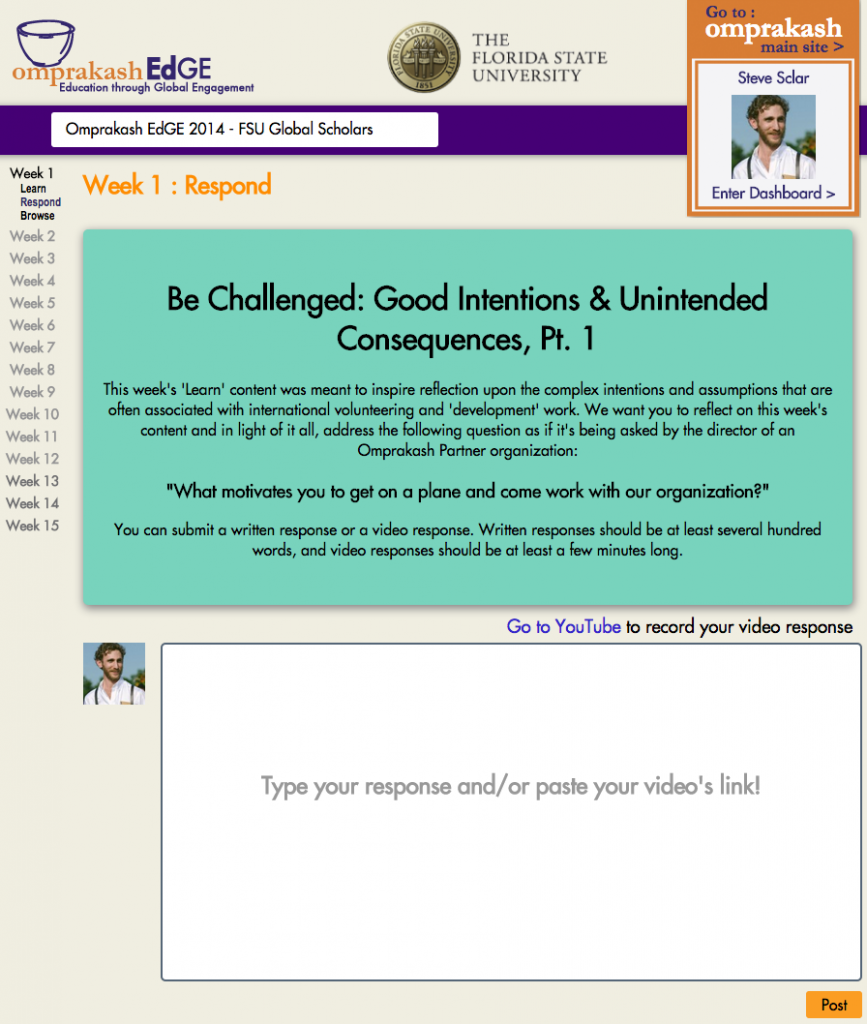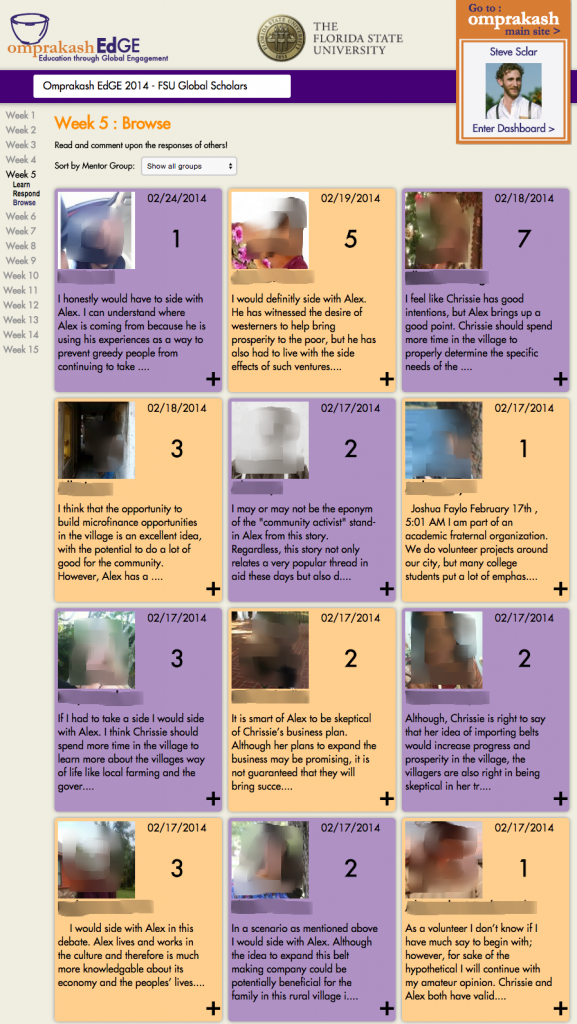“Where are the digital humanists critiquing the growing surveillance state?”
—Michael Widner, 2013
Citing events such as Edward Snowden’s whistleblowing and the passing of the PATRIOT Act in the US Congress, Widner argues that digital humanists are doing little to nothing to intervene in the ever-increasing infringements on privacy in the Western world. His argument, however, is framed around a specific type of DH—male-dominated, highly computational scholarship that emulates the data mining projects of organizations such as the NSA. For critical digital humanists, surveillance is a site where issues surrounding race, gender, and sexuality intersect with our digital lives. Works such as Safiya Noble’s Algorithms of Oppression: How Search Engines Reinforce Racism (2018), Miriam Posner’s “See No Evil” (2018), and Jacqueline Wernimont’s Numbered Lives: Life and Death in Quantum Media (2018) reveal a growing concern with surveillance, with groups such as SurvDH and the Digital Library Federation’s Technologies of Surveillance working group providing outlets for digital humanists to explore these topics in more depth. Similarly, rhetoric and composition scholars are developing new work on the effects of surveillance in the university by examining how digital composition tools, data-sharing platforms, social media networks, and learning management tools place our students’ data at risk. Although these fields have distinct approaches, they articulate the ethical concerns raised by surveillance culture’s pervasive invasion into our classrooms and our lives.
Since 2016, I have taught four courses focused on surveillance and data ethics. Two were geared towards undergrads—one in a women’s and gender studies department at a large public university and one in an American studies department at an elite, small private college. The other two iterations were taught at the Digital Humanities Summer Institute in Victoria, BC, a program that provides graduate students, faculty members, librarians, and technologists a chance to learn about a key theory or methodology within the digital humanities. While the course has seen slight variations over time, its overarching goal has always been to interrogate the ethical issues of state, corporate, and social surveillance mechanisms. To that end, I included texts written largely by women and BIPOC to demonstrate the ways in which surveillance culture exacerbates ongoing discrimination against marginalized groups. Some of these texts include Simone Browne’s Dark Matters: On the Surveillance of Blackness (2015), Kim Tallbear’s Native American DNA: Tribal Belonging and the False Promise of Genetic Science (2013), and Shoshana Amielle Magnet’s When Biometrics Fail: Gender, Race and the Technology of Identity (2011).
While my goal has always been to advocate for decolonial and anti-colonial approaches to surveillance, the first iteration of the course began with a discussion of Foucault’s panopticism. At the time, I argued that Foucault provides a foundation for understanding the structures of Western surveillance, which, once understood, can be applied to the U.S. imperial enterprise and can shape our analysis of events such as the Standing Rock protests or the #BlackLivesMatter movement. Although I sought to demonstrate the inequities of the surveillance machine, structuring the course in this way elided many of the flaws within Foucault’s argument. Perhaps most damaging is Foucault’s (1995) assertion that surveillance, by virtue of being everywhere, affects everyone similarly. He states, “Bentham dreamt of transforming into a network of mechanisms that would be everywhere and always alert, running through society without interruption in space or in time. The panoptic arrangement provides the formula for this generalization” (Foucault 1995, 209). In other words, the panopticon is designed to penetrate all communities, spaces, and cultures; causing many to ask, “If the panopticon is everywhere, then aren’t we all the equal victims of its repressive machinations?”
Students are incredibly responsive to this argument. They love to expound upon how their homes, schools, sports teams, and extra-curricular activities are all part of the system that Foucault describes, and who can blame them? It helps to clarify the basic tenets of Foucault’s argument, and it gets them excited about surveillance and privacy issues. Yet, it is only now after many years that I realize the extreme disservice this has done to my students. By allowing them to conflate varied surveillance mechanisms and contexts, I failed to implement a culture of care in the classroom. At that moment, I did not explicitly affirm the central premise of the course—surveillance is a tool of state and corporate oppression that has disproportionate consequences for women and people of color. This had one of two possible consequences: it either overstated the severity of their experiences or downplayed real (and unspoken) traumas. Conversations on surveillance tend to be problematic because much of the canon encourages readers to believe in two false premises—that all surveillance is equal and that surveillance is inescapable. These premises are not only dangerous for readers of Foucault, but also for our culture at large. As the foundational theory surrounding Western surveillance culture, Foucault’s views have pervaded our daily lives, making us docile when we experience monitoring from our co-workers, classmates, employers, retailers, and devices and reinforcing colonialist hierarchies of power and marginalization.

To push back against these misconceptions, it is crucial that we present students with different perspectives on surveillance, privacy, and power. As Eve Tuck and K. Wayne Yang (2012) note in their groundbreaking work, “Decolonization is not a Metaphor,” language is a powerful tool by which to address inequalities pervasive within surveillance culture and inherent to the colonial enterprise. They note:
One trend we have noticed, with growing apprehension, is the ease with which the language of decolonization has been superficially adopted into education and other social sciences, supplanting prior ways of talking about social justice, critical methodologies, or approaches which decenter settler perspectives. Decolonization, which we assert is a distinct project from other civil and human rights–based social justice projects, is far too often subsumed into the directives of these projects, with no regard for how decolonization wants something different than those forms of justice. (2)
By adopting the language of decolonialism into our social justice initiatives, settler scholars (myself included) are allowed to ignore the long histories of settler colonialism that have shaped our perceptions of justice, allyship, and activism both inside and outside the academy. Our reliance upon teaching surveillance theory through Foucauldian principles similarly is flawed, as his discussion of surveillance negates the settler enterprise by eliding it entirely.
One of the ways Foucauldian logic contributes to this elision is through its choice of analogies. Instead of structuring his core discussion of surveillance around strategies of conquest and colonialism, Foucault references a seventeenth-century document that outlines procedures for towns affected by the plague. According to these rules, citizens are coerced to acquiesce to surveillance upon pain of death. By describing surveillance through this metaphor, Foucault (1995) explicitly misrepresents the harm wrought by state surveillance and ultimately enables its continuation. His discussion of panopticism begins as follows:
First, a strict spatial partitioning: the closing of the town and its outlying districts, a prohibition to leave the town on pain of death, the killing of all stray animals; the division of the town into distinct quarters, each governed by an intendant. Each street is placed under the authority of a syndic, who keeps it under surveillance; if he leaves the street, he will be condemned to death. On the appointed day, everyone is ordered to stay indoors: it is forbidden to leave on pain of death. (195)
Without context, his narrative is one of conquest—citizens are cut off from neighboring communities, their resources are destroyed or placed under foreign control, and individuals are forced to acquiesce to this system upon pain of death. These characteristics are not relegated to one particular colonial experience, but are inherent to processes of conquest. Moreover, Foucault would have been familiar with the processes of colonialism. In The History of Sexuality, he asserts that the rise of repression occurred in the seventeenth century, but his argument focuses on the cultural repression of sexuality. He fails to mention that the seventeenth century also marks the peak of the African slave trade, the expansion of Spanish missions, and the founding of Jamestown. Each of these events is a key component of settler culture’s colonial enterprise.
Indigenous peoples across the globe were subjected to the surveillance systems embedded within the conquest apparatus. In the United States, the conquest of indigenous peoples occurred in many forms—through the development of reservations, the allotment of land, and the use of residential schools. Similarly, indigenous resources were killed off to ensure that each nation’s way of life was no longer sustainable. One of the most common misconceptions is that all indigenous peoples were treated similarly during these processes, but this is patently untrue. Some indigenous nations, such as the Miami and Delaware, lost their federal status, meaning that their economies, customs, cultures, and homelands were stripped from them entirely. The Dakota, Lakota, and Nakota’s economies were toppled by the killing of the buffalo in the Great Plains; however, many other communities faced similar economic devastation. The Osage, who maintained mineral rights over their federally appointed lands in Oklahoma, garnered great wealth during the oil boom; however, they were only allowed to access these profits through their government-appointed guardians, each of whom was white. As such, few Osage received the money owed to them for use of their land; instead, the federal government developed a system that systematically stripped them of their economic well-being. Although many indigenous nations filed lawsuits against the United States government, noting the particularly cruel and discriminatory nature of many federal laws pertaining to indigenous peoples, the vast majority of these systems are still in place. Those who have rebelled against this mistreatment via force have been sentenced to death. Similar processes were implemented in the United States colonies, including Puerto Rico, the U.S. Virgin Islands, Guam, the Marshall Islands and Hawai’i. In each case, the islands were cut off from neighboring communities and forced to acquiesce to U.S. rule upon pain of death. Military bases were established across the islands, and indigenous ways of life were subsumed by industries beneficial to the colonial enterprise, particularly sugar and coffee. In some cases, such as in Puerto Rico, multiple waves of colonial rule sought to eradicate indigenous communities and identities.
So, why is it important to discuss indigenous peoples in the context of the panopticon? Indigenous peoples have been subjected to the harshest forms of surveillance, yet they appear nowhere in Foucault’s analysis or in the work of his intellectual descendents. Andrea Smith (2015) notes that “the manner in which Foucaldian analyses of the state tend to temporally situate biopower during the era of the modern state disappears the biopolitics of settler colonialism and transantlantic slavery” (23).[1] In other words, many scholars of surveillance, either implicitly or explicitly, erase the ways in which the formation of the state was dependent upon the subjugation of indigenous and black bodies.
To counteract these texts, scholars such as Simone Browne, Virginia Eubanks, Shoshana Amielle Magnet, and Safiya Noble theorize about the relationship between surveillance and colonialism by demonstrating the ways in which marginalized peoples often experience the greatest consequences of surveillance culture. Browne (2015) notes that “When particular surveillance technologies, in their development and design, leave out some subjects and communities for optimum usage, this leaves open the possibility of reproducing existing inequalities (162–3). At other times, communities are more explicitly targeted by surveillance culture for speaking out against the colonial machine. Andrew Crosby and Jeffrey Monaghan (2018) note that “Indigenous activists are policed using the powers and resources of the national security apparatus, demonstrating the extensive reach of the ‘war on terror’ into the traditional domain of colonial governance.” Groups such as #BlackLivesMatter and the protesters at Standing Rock have faced similar scrutiny, with critics using the rhetoric of terrorism to incite their critiques of what bell hooks terms “imperialist white supremacist capitalist heteropatriarchy” (1984, xv). To address this marginalization, Browne (2015) offers up the framework of “dark sousveillance” which “speaks not only to observing those in authority (the slave patroller or the plantation overseer, for instance) but also to the use of a keen and experiential insight of plantations surveillance in order to resist it” (22). She then extends this framework to contemporary physical and digital environments that continue to discriminate against black bodies. Looking at historical sites of surveillance and resistance can help us develop strategies for countering discrimination in the modern world.

Analysis, however, is not enough. We must imagine possibilities for pedagogy and activism that operate outside of surveillance culture. We can only do so if we interrogate the second false premise offered by Foucault’s model: the panopticon is inescapable. According to his analysis, citizens of the modern world always operate within the realm of surveillance, and individuals can only move from one controlled environment into another. This view normalizes surveillance culture in unhealthy and unethical ways; by claiming that surveillance is inescapable, we tacitly agree that corporations, predators, and the state do not need our consent or our approval to monitor us. According to Smith (2015), “reliance on state surveillance prevents us from seeing other possibilities for ending violence, such as through communal organization that might be able to address violence more effectively” (36). Although numerous alternatives to surveillance culture exist, most seem to rely on a sense of communal ties. Foucault himself posits the antithesis of the panopticon to be carnival—a celebration in which citizens are free from surveillance, monitoring, and order. While living in a permanent state of celebration may not be conducive to the functioning of society, adopting an explicit set of communal values does subvert surveillance culture by resisting individualization, isolation, resource allocation, and assimilation. Organizations dedicated to studying the ethics of surveillance, such as the Electronic Frontier Foundation, provide a series of best practices—consent, revocation, decentralization, and protection. By giving individuals the opportunity to control when and how they are surveilled, and by protecting the information they choose to provide, they suggest that we can develop a culture that values human health and well-being over power and profits. But how do we implement these strategies in our classrooms? Below, I outline a number of strategies I have used to counteract Foucauldian logics and to emphasize the injustice created by surveillance culture.
Start with something other than Foucault
Consider what voices you are centering and what effects this has on your pedagogy. All subsequent iterations of this course have begun with settler colonialism. By examining the surveillance mechanisms deployed against indigenous peoples—relocation, allotment, assimilation, and erasure to name a few—students begin to understand the varied contexts in which humans experience surveillance. Course readings include excerpts from Tommy Orange’s There There (2018), Sandy Grande’s introduction to Red Pedagogy: Native American Social and Political Thought (2015), and Andrea Smith’s article “Not-Seeing: State Surveillance, Settler Colonialism, and Gender Violence” (2015).
In class, I demonstrate the undue surveillance experienced by indigenous peoples by talking through problematic laws such as the Dawes Act (1887), the Indian Citizenship Act (1924), and the Indian Relocation Act (1956). During the discussion, I tape off sections of the floor to depict the ways in which indigenous lands were systematically privatized, stolen, and/or devalued for the sake of settler profit. Seeing the classroom broken into pieces, with each one subject to unique rules and governance, helps students gain an understanding of settler surveillance and the ways it was used to destabilize, destroy, and decimate indigenous communities across the United States. This framework also provides opportunities for challenging Western knowledge systems. One way to do so is by highlighting organizations that resist surveillance by upholding indigenous values and data practices. The Sovereign Bodies Institute, an organization that “builds on Indigenous traditions of data gathering and knowledge transfer to create, disseminate, and put into action research on gender and sexual violence against Indigenous people,” is one such example. Their model challenges many forms of settler culture; in particular, they collect data on Missing and Murdered Indigenous Women and Girls (MMIWG) and share it with organizations fighting against the mistreatment of indigenous women. Additionally, they refuse to share their data with settler enterprises—including police, academic researchers, and colonial governments. They even go so far as to refuse funding from settler agencies, ensuring that they retain sovereignty over all elements of their work. As such, the Sovereign Bodies Institute serves as a powerful model for engaging in anti-surveillance work that is communally-engaged, socially-conscious, and intentionally indigenous.
There are many other valuable pedagogical strategies to consider. Simone Browne’s work interrogates the trafficking of enslaved peoples, noting that many surveillance mechanisms were deployed to control the movements, bodies, wealth, and opportunities for black bodies. Her work, Dark Matters: On the Surveillance of Blackness (2015) pairs well with texts such as Safiya Noble’s Algorithms of Oppression: How Search Engines Reinforce Racism (2018) and Shoshana Amielle Magnet’s When Biometrics Fail: Gender, Race and the Technology of Identity (2011). Each explores the ways in which surveillance technology disproportionately targets black bodies and provides useful strategies for subversion and resistance.
Skip Foucault entirely
I have taught four iterations of this course, two as undergraduate seminars and two as special topics courses at the Digital Humanities Summer Institute (DHSI), which is geared toward graduate students, librarians, faculty members, and technologists. In most of these cases, Foucault has been unnecessary for the function of the course. Undergraduates are well aware of the omniscience of the surveillance machine and are happy to engage with other theories or examples. Professionals in the field, on the other hand, have often read Foucault already and are interested in analyses that move beyond his arguments. In either case, Foucault is unnecessary and may even hinder students’ ability to engage in meaningful critiques of surveillance culture.
Conduct surveillance self-assessments
One strategy surveillance specialists use to assess their physical and digital vulnerabilities is threat modeling, a technique that helps to identify, analyze, and prioritize security risks. In Dragnet Nation: A Quest for Privacy, Security, and Freedom in a World of Relentless Surveillance (2015), Julia Angwin uses threat modeling to assess her own security practices. Using her work as a model, I ask students to think through how their positionality, employment, family, peer group, shopping habits, and social media all influence their participation in surveillance culture. This helps students untangle the numerous and overlapping modes of surveillance woven into their day-to-day experiences as well as to identify often overlooked components of their privacy practices.
Discuss more than digital surveillance
Scholars such as Safiya Noble and Cathy O’Neil note that the biases within digital systems are often obscured or invisible. One reason algorithms are so harmful is that they discriminate along many vectors simultaneously. Algorithms can weigh factors including race, ethnicity, gender, sexuality, income, education, and age within a single formula, making it difficult to determine the source of their biases. To help students understand the function of these networks more clearly, it can be beneficial to point out their operation in the physical world. Often, physical surveillance is designed around one or two vectors, which can be traced through data collection, observation, and/or analysis. Our world is rife with examples—the disproportionate policing of black and brown bodies, the undue violence experienced by protestors and dissidents, the illegal detainment of migrants at the U.S.-Mexico border, and the harassment experienced by othered bodies at Transportation Security Administration (TSA) checkpoints. Once students begin to understand these forms of surveillance, they can more easily apply this knowledge to our digital systems.
Implement an ethic of care
When teaching surveillance related topics, remember that your students may experience anxiety or trauma around certain topics. Do not ask students to expound upon invasions to their own privacy unless they offer them up freely. Talk to them about stress-management techniques and mental health resources in addition to privacy practices.
Similarly, be sure not to place others at risk for the sake of learning. In March 2019, the following privacy assignment went viral on Twitter:

Imagine different possible futures
One of the greatest tools we have for resisting surveillance culture is speculative thinking. By imagining new possible futures we allow ourselves to think outside the restrictive structures of modern society, such as capitalism, colonialism, or consumerism. In fact, futurisms have long been a tool of critical race scholars working at the intersections of race and technology. Grace Dillion (2012), who coined the term “indigenous futurisms,” notes that this technique “can create estranged worlds of the future in which the writer can foreground … the intersection of indigenous nations with other sovereignties, race, technology, and power” (11). In the same way, futuristic thinking can provide our students with a means of escaping the oppressive elements of surveillance culture and imagining new strategies for resisting its machinations.

We must give our students the tools to speculate about such futures. Teaching them to question Foucault, and thereby the premises of Western surveillance, is vital to this process. As Kari Kraus (2018) notes, speculative thinking requires that we segment existing structures into their component parts: “Without the ability to segment an everyday object into its constituent parts, each of which can be manipulated independently of the others, Morse could never have conceived of his invention, let alone built it. Fault lines yield the fragments that artists, inventors, designers, writers, and conservators use to make, unmake, and remake the world” (163). One of the ways we can start to break surveillance culture into fragments is by challenging the primacy of Foucault. We must fight against the false premises presented in Foucault’s argument or risk becoming complacent to the inequalities proliferated by surveillance culture. Failing to address the harms of surveillance in our communities only exacerbates their effects by encouraging their continuation and intensification. Modern surveillance tools make it challenging, if not impossible, to pinpoint the characteristic(s) against which the tool has been programmed to discriminate. Cathy O’Neil (2016) notes that “Like gods, these mathematical models were opaque, their workings invisible to all but the highest priests in their domain: mathematicians and computer scientists. Their verdicts, even when wrong or harmful, were beyond dispute or appeal. And they tended to punish the poor and the oppressed in our society, while making the rich richer” (8). As such, scholars, activists, and the public need to band together to fight against unethical surveillance practices; one effective way is by providing our students with the tools needed to critique the surveillance machine and to envision more equitable futures.


